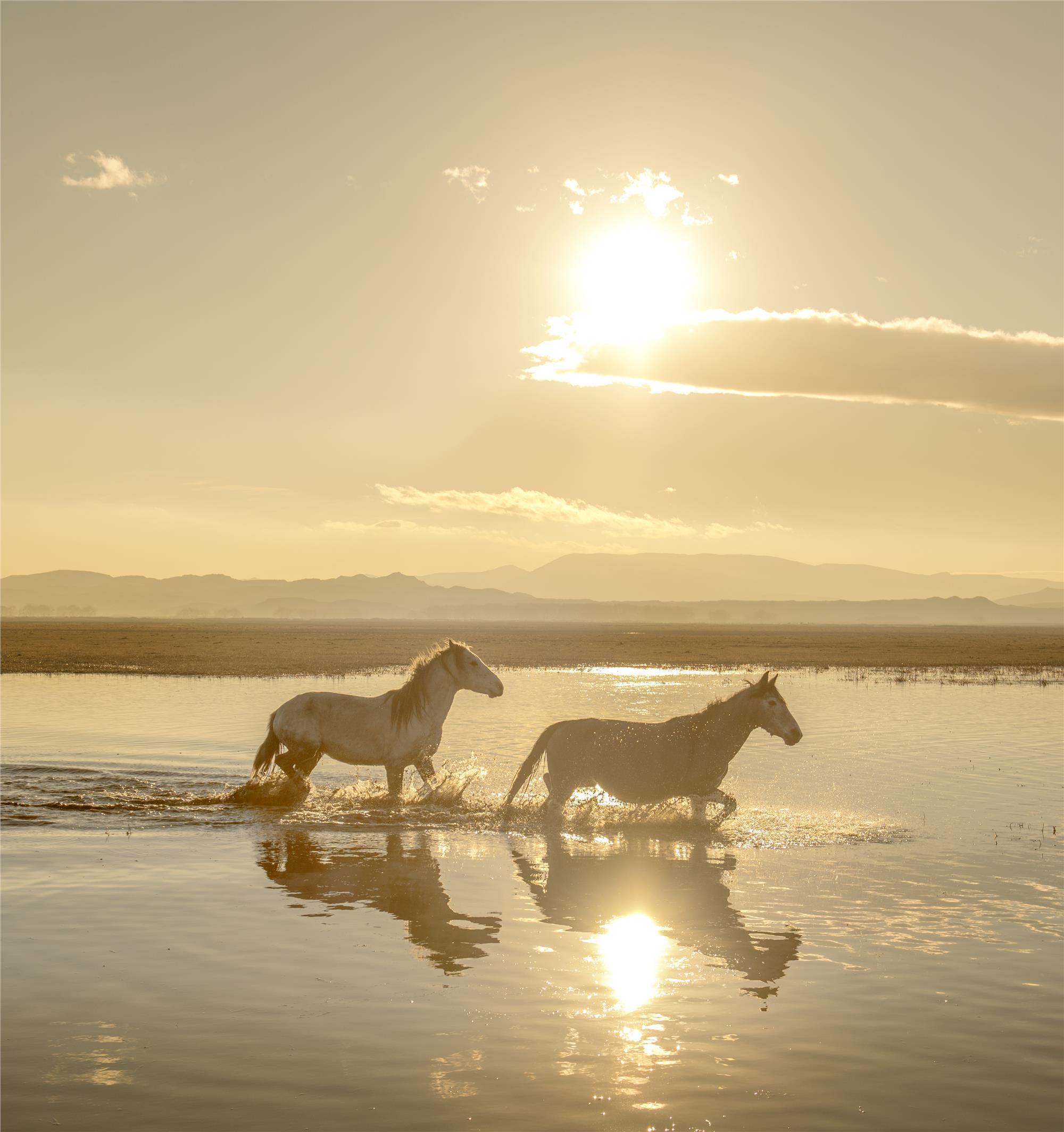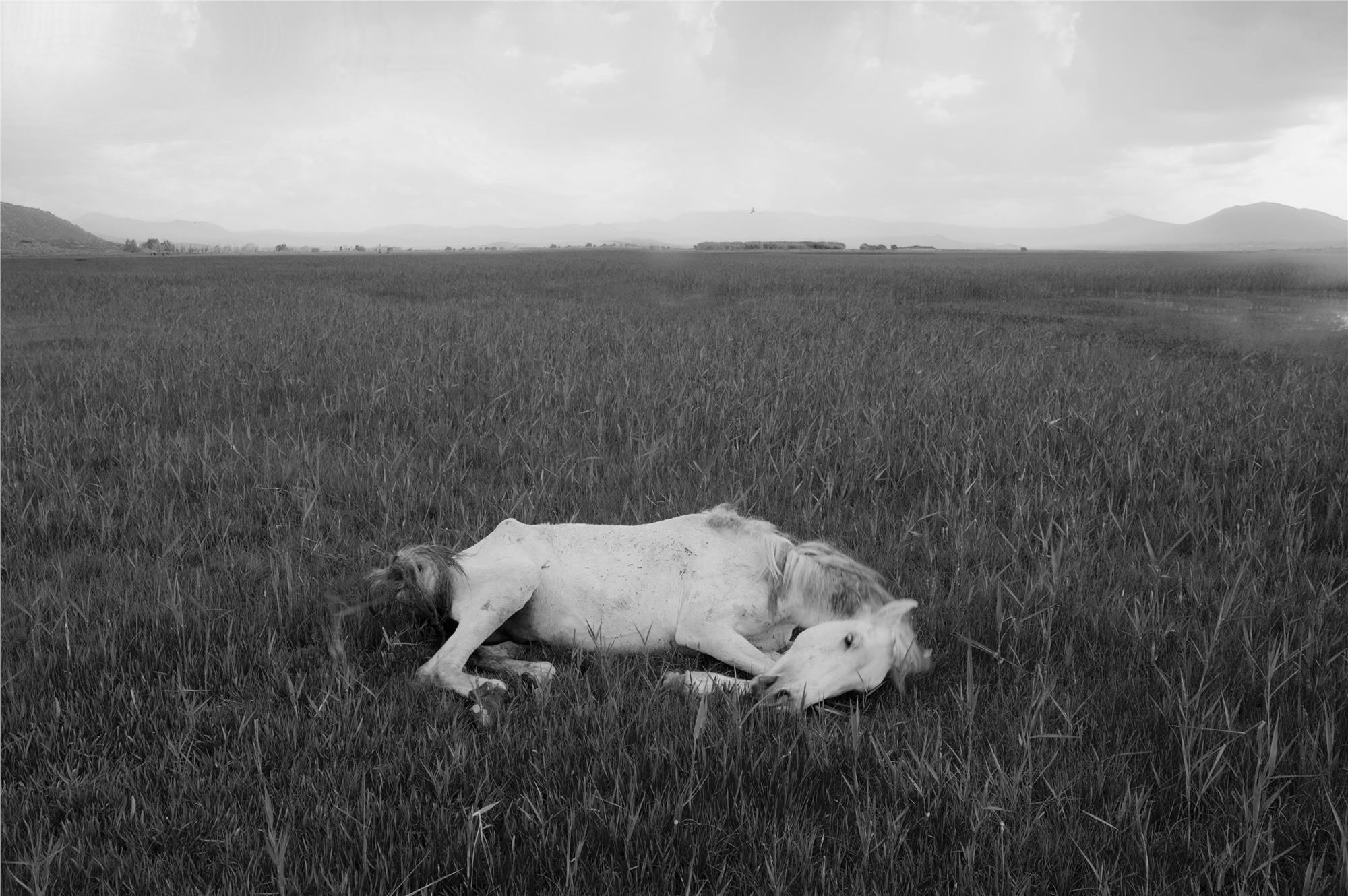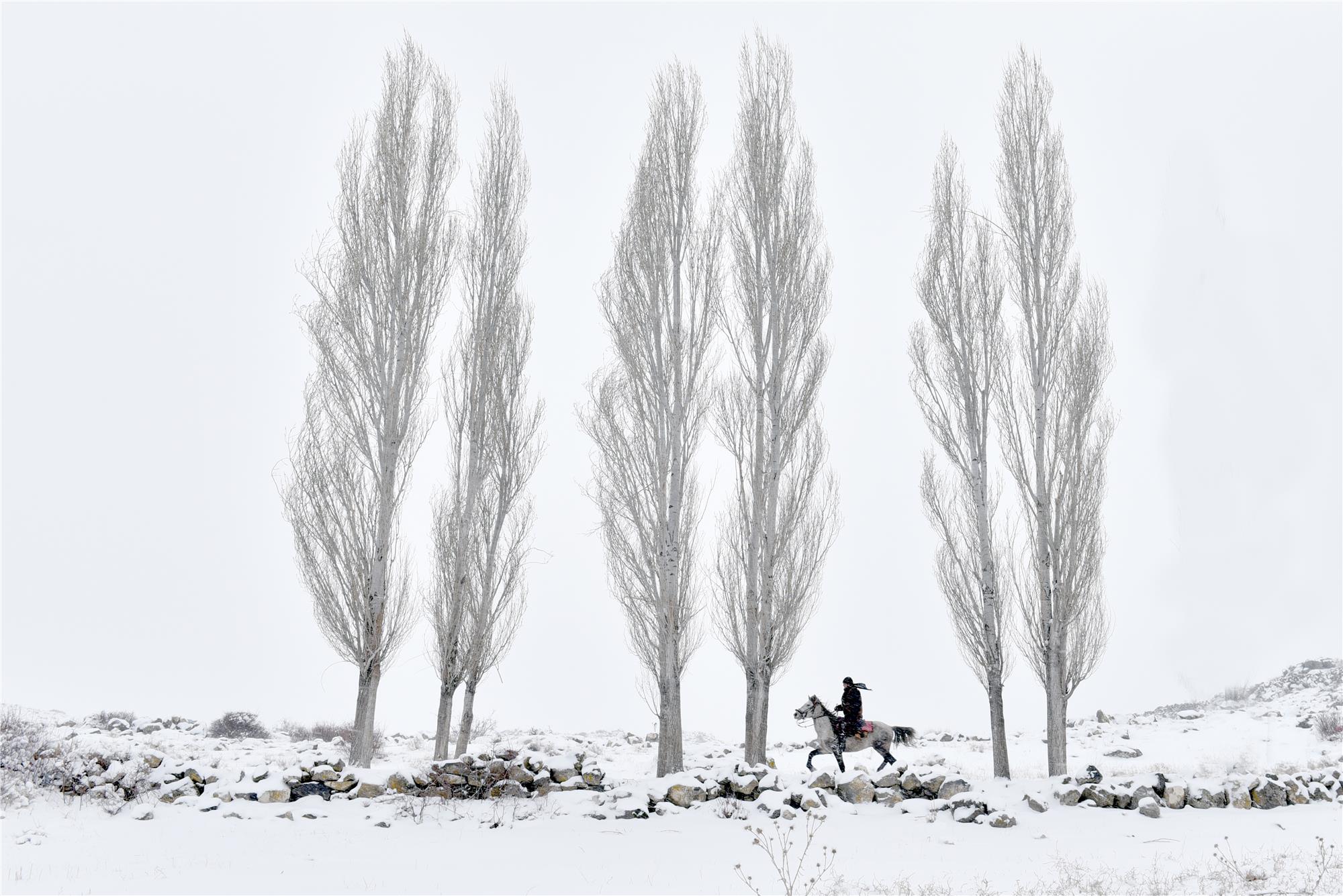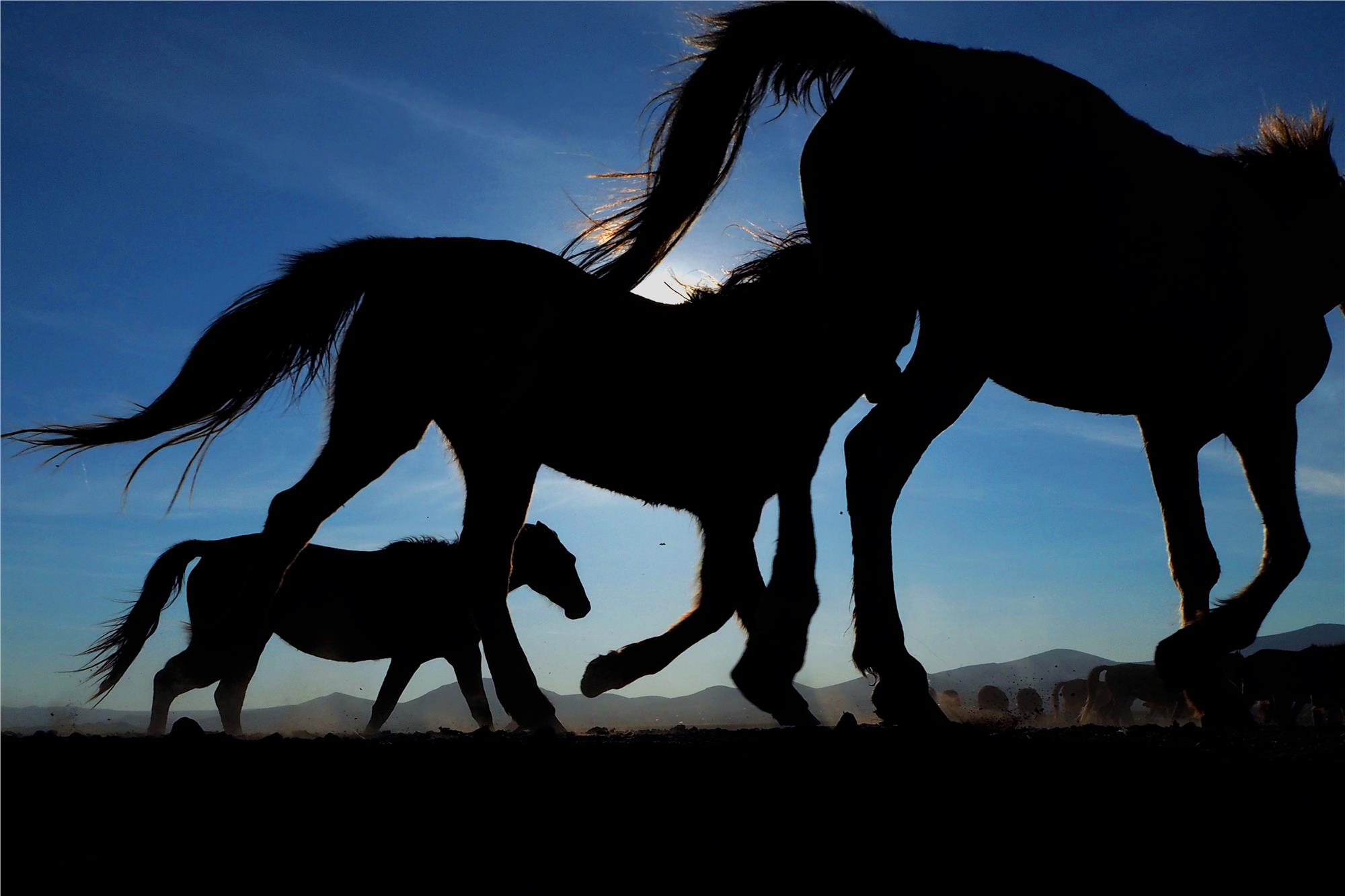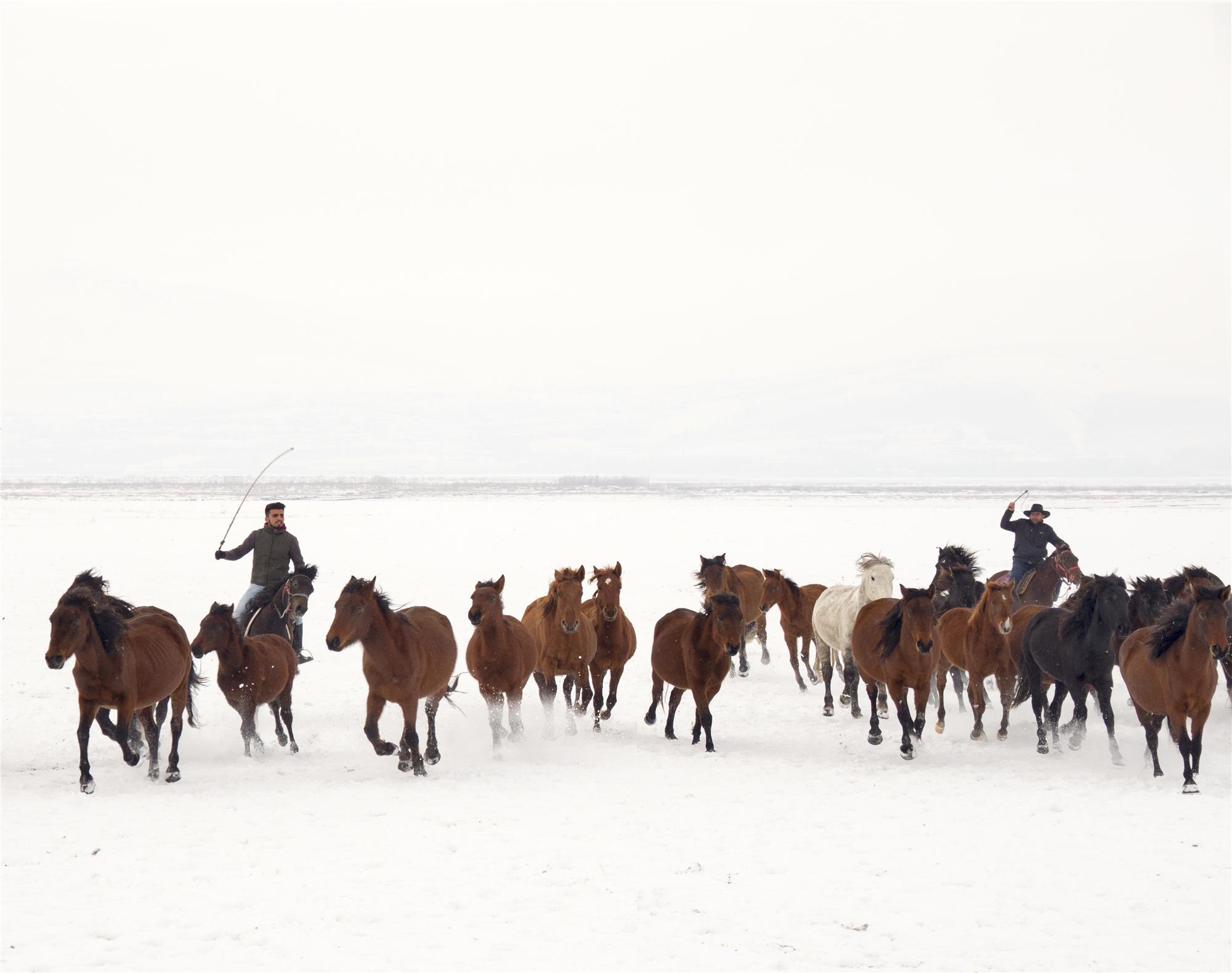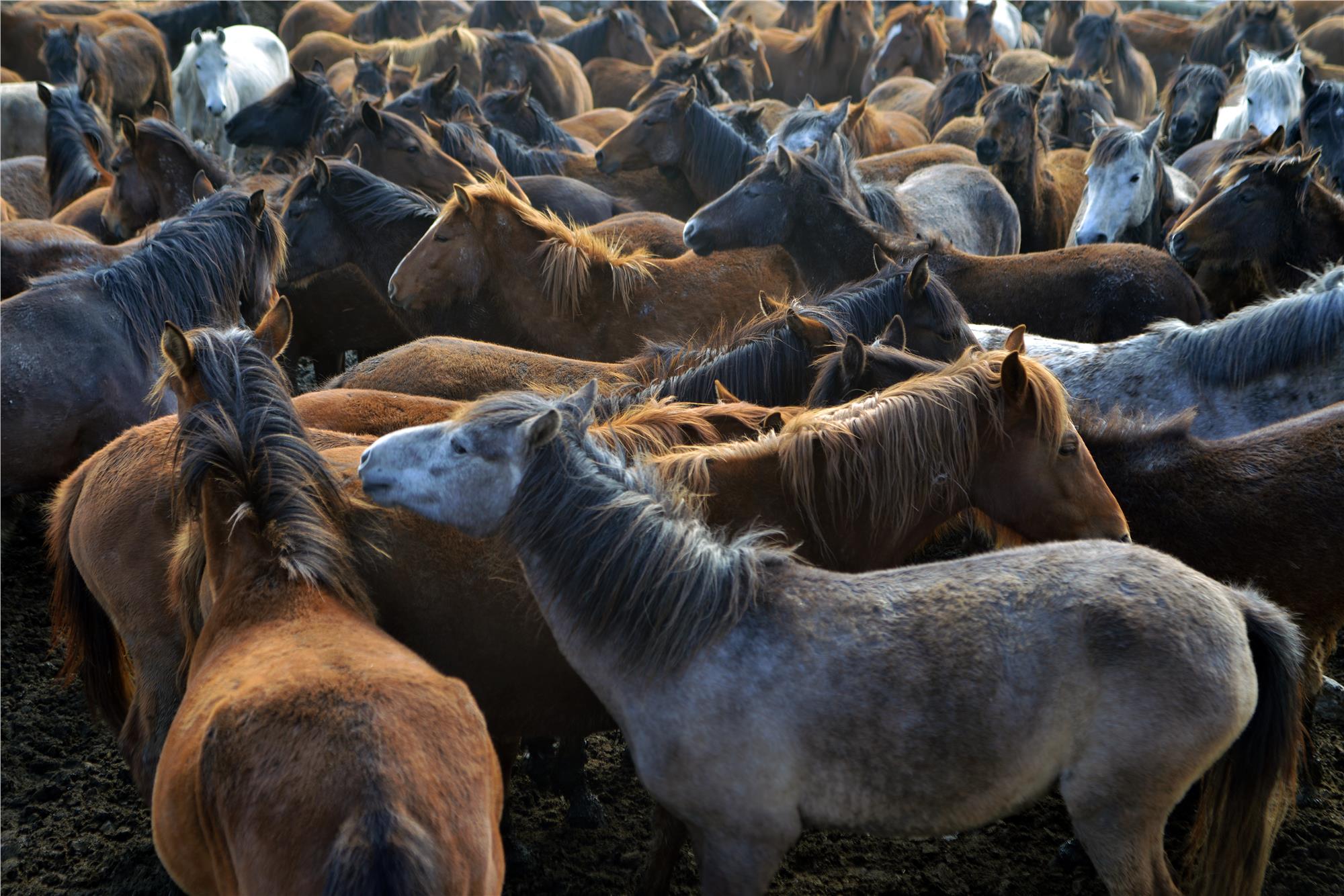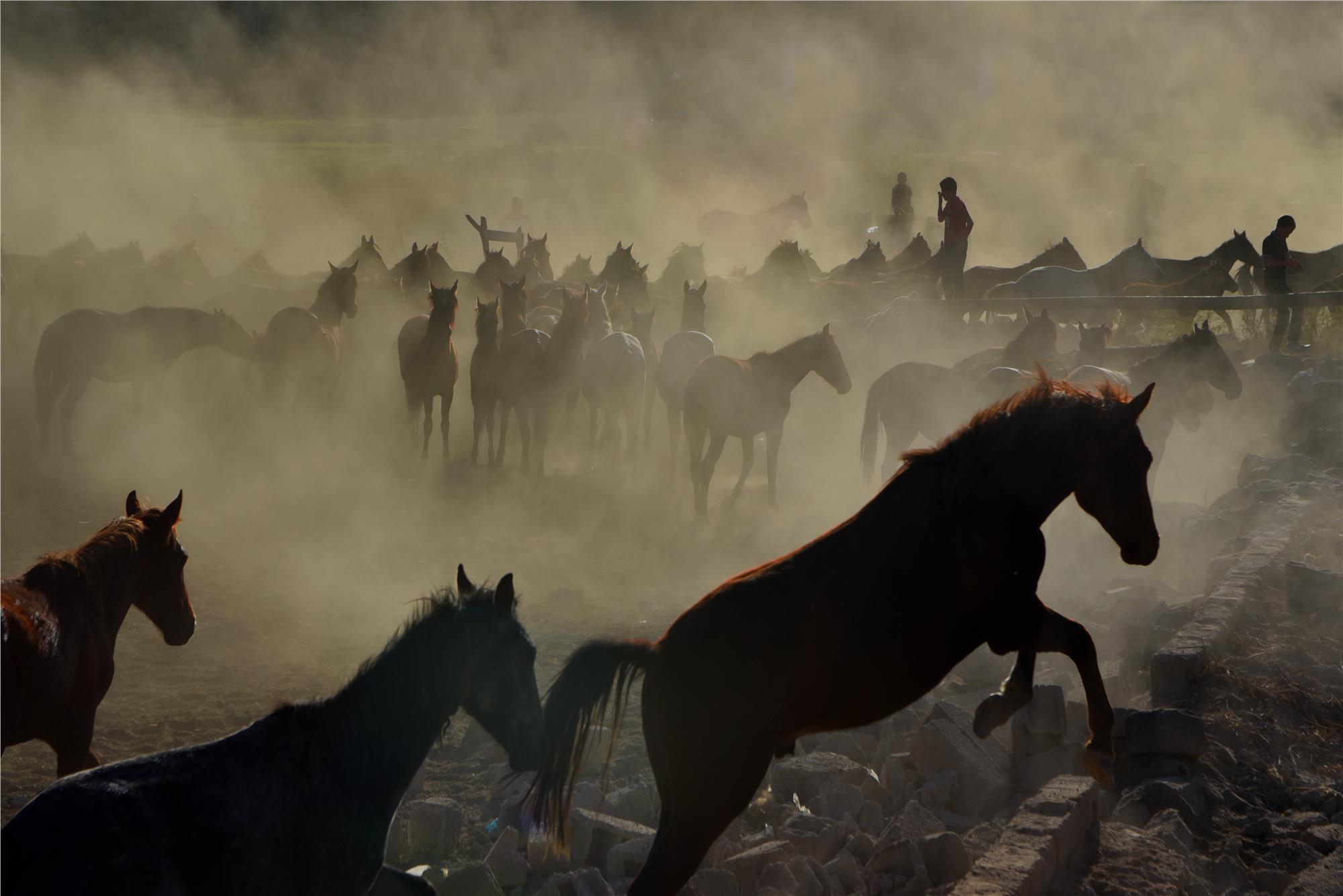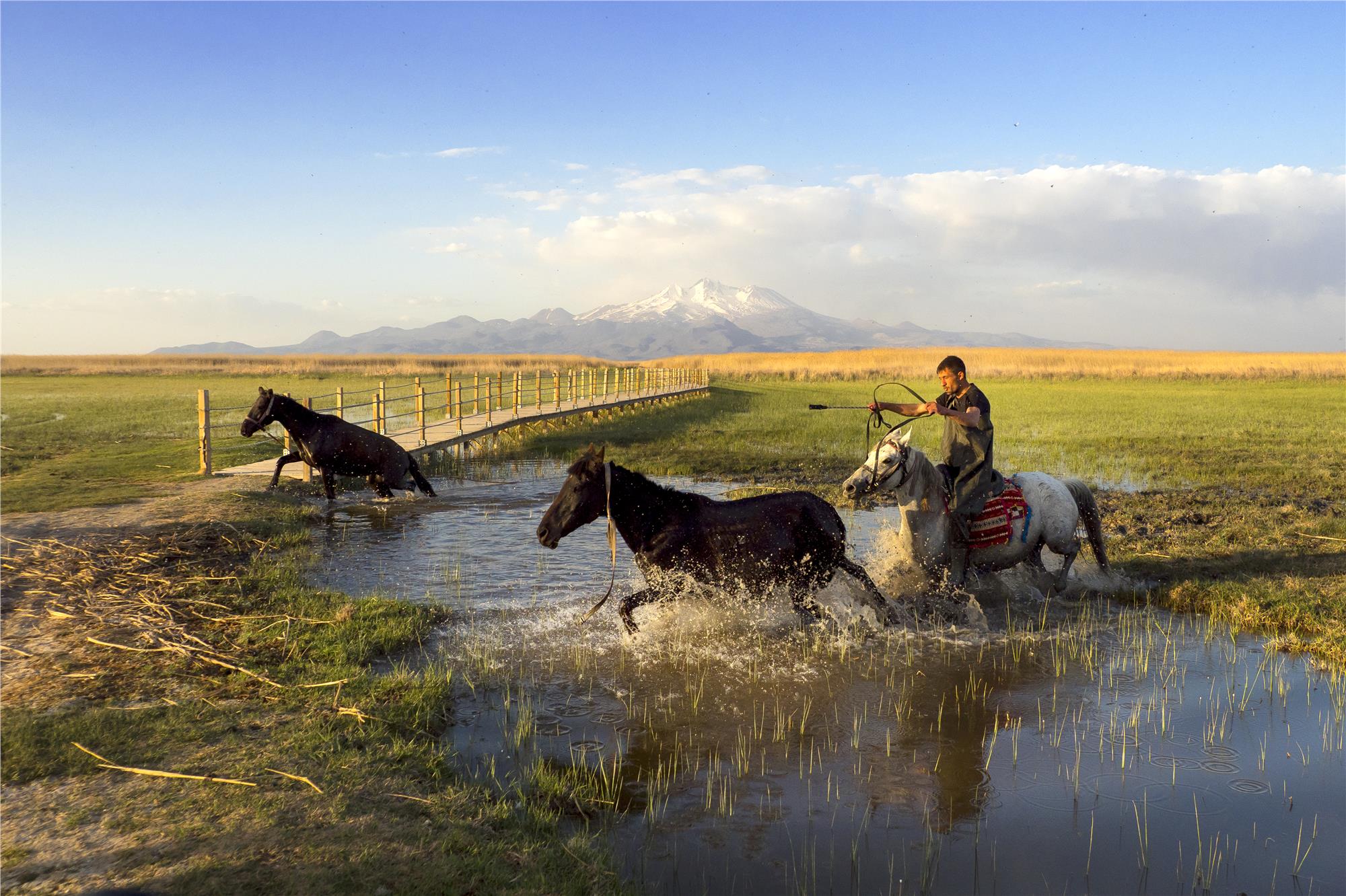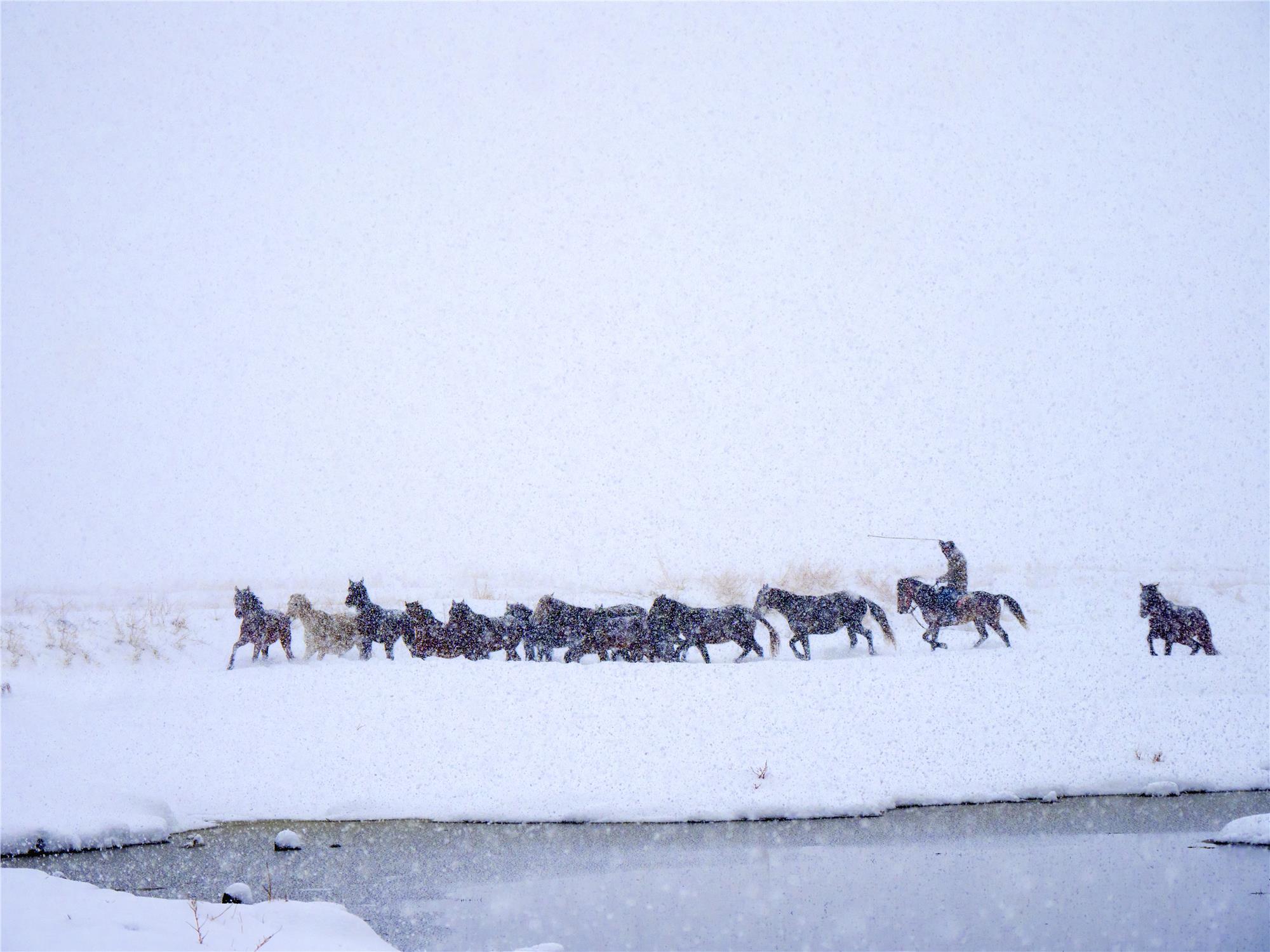
For some people, equine photography is a need and a way of life like air and water.
The number of people who do not know a life other than photography is not to be underestimated. Equine photography has an energy that rejuvenates the souls of many people.
Along with the amazing art of photography, professional equine photography is the summit of the most beautiful frame and the most handsome objects while creating the concept of craftsmanship.
Equine is an entity with vision, chemistry, growth, awareness, friendship, companionship, comrade and confidant. It is a symbol of light that tears and illuminates the darkness with its ambition, freedom, youthful spirit, lightning speed, innocence, loyalty and gliding.
For a professional horse photographer, there is no more beautiful scenery than a horse, an aesthetic model, a safe dormitory, a safe harbor, and a lofty mountain to lean on.
The horse is the fastest of the winds, the hottest part of the sun, the safest town on earth. The legend of fairy tales is the most beloved hero of epics. What is equine photography? The answer to the question is a once-in-a-lifetime nursery rhyme that makes you feel legendary and fairy-tale in every frame.

Disseminating a passion for creating beautiful, inspiring images of horses, equine photography is an effort for photographers to work, promote and share, offering support, education and opportunities. It's about trying to spread the passion for horses and photography to people of different skill levels.
It constantly strives to build a knowledge and resource for horse and photography, teaching how to plan photography sessions with helpful suggestions for the photographer and horse owner.
Equine photographer shares special techniques for taking pictures of horses.
In today's horse and photography world, how the shooting should be done and professionalization steps are becoming more and more important. It is also of great importance for equestrianism. Equine photographer shares valuable information about special techniques for taking effective photos of horses. Experience and knowledge are imparted to enthusiasts of all levels, helping them acquire skills and abilities related to the core values and variables involved in the successful shooting of horses.
Equine photographers provide technical information about camera, light and shooting techniques, sample images, usage patterns on internet and social media, basic techniques for presentation, tips.
Equine photography workshops develop engaging shooting practices
In equine photographer class activities held within the scope of equine photography workshops, horse-specific storytelling, classic black or white backgrounds to emphasize the horse's power and grace, and interesting shooting practices are developed.
Equine photography workshops show you how to use horse friendliness in photo shoots
Teaching the clean structures and well-organized compositions, equine photography workshops show you how to use the horse's sheer strength, graceful movements, silky mane, sensitive spirit and friendliness in photo shoots.
He is one of the forerunner artists, horse-friends and doyens of horse photography, who have made great contributions to the spread of horse photography to the world.
A true horse friend and photographer, Tony Stromberg is the companion and confidant of these big friends.
Tony Stromberg establishes horse photography workshops. He focuses on horses day and night while sharing his 35 years of photography experience and the secrets of his love for horses.
Tony, the owner of special techniques for shooting horse photos, conducts exciting and impressive workshops.
Tony Stromberg is one of the most important masters of working with light, angle, shooting planning, background selection, camera setup processes.
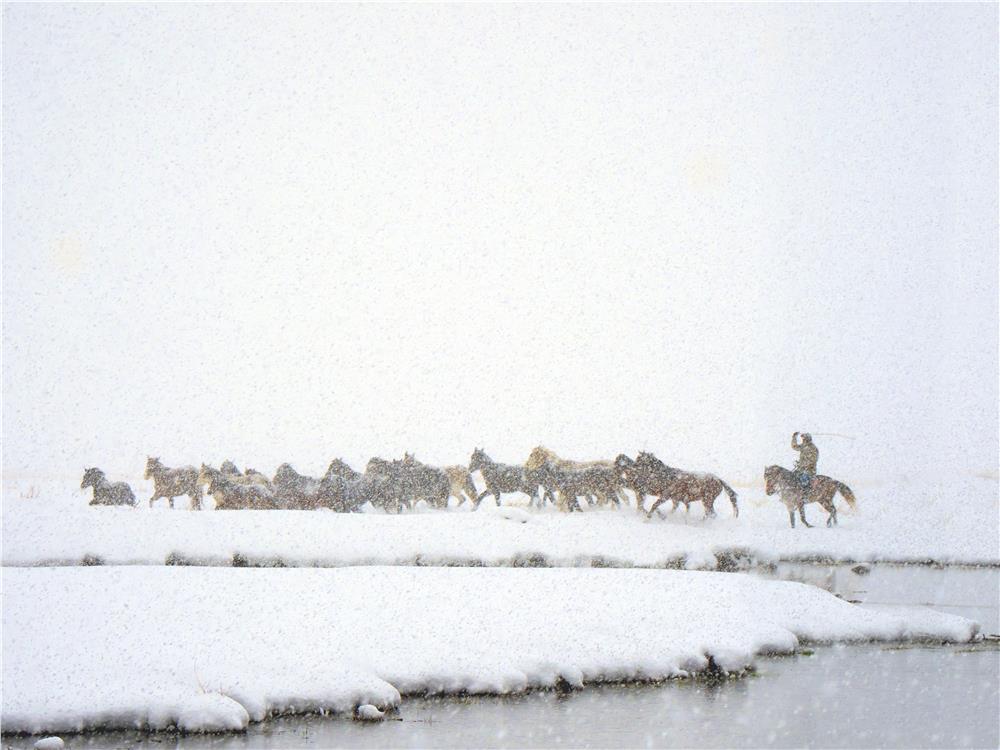
The professional equine photographer explains how the telephoto lenses you should use for beautiful horse photos will give better results on horse motifs and make them look more compact and elegant. Nuri Çorbacıoğlu is a Professional equine photographer who strives for the advancement of this profession and for those who have a passion for horses and photography.
In equine photography workshops and equine photographer classes, Nuri Çorbacıoğlu presents the details of the sharp lens, the zoom lens required for horses in motion, providing more flexibility than the fixed lens, the camera body as important as the lens, and the fine sensor needed for high-quality images.
Equine photography services tells the tips of technical information
Equine photography services provide technical tips on why choosing a good sensor over camera speed when choosing between a fast crop camera and a full format camera.
How to Take Great Equine Pictures
The most pleasant photos of the horse are those with its ears pointing forward because it is awake and happy. This is practically the horse version of smiling for the camera.
Position the horse so that they are standing upright on all fours and facing forward. Have a friend use their ears forward technique while standing in front of the horse, and then you take the photo from the side.
Stand at horse level when taking pictures from the horse's side
When taking pictures from the side of the horse, stand at the level of the horse so that they do not appear crooked. If you stand too close to the front of the horse, their heads look huge. If you're photographing a smaller horse, their legs will appear in proportion to their upper body if you crouch down a little to take the picture.
The most productive place for horse photography is the stable and its surroundings.
A less distracting background will make your subject very good. The most productive place to take pictures is the barn open area or areas where trees create a dark backdrop for the horse to stand out.
The best times to take horse photos are in the morning or evening.
The best times to take photos are in the morning or evening. At these times, a side of the horse is seen where the light hits them best, avoiding harsh shadows. You can also get different, artistic lighting when the sun is behind the subject. The worst time to take pictures is at noon as the sun is bright and directly overhead.
Take advantage of filters on Instagram
Use filters on Instagram to make your photos look significantly more professional. Light adjustments in filters allow you to make color adjustments.
It is very important to understand horse’s needs and characteristics in order to take their photos
Few animals capture the hearts and souls of humans like horses. The horse is a great, magnificent being full of character, grace and love. In order to take pictures of horses, it is very important to understand their needs and characteristics.
Horse and equine photography is a very broad term to describe any photography related to a horse. It involves some specialization such as integrating photography skills with a love of horses providing many different opportunities.
Being well prepared for a photo shoot makes things easier
Equine photography is a broad field. Knowing the different types of images you can take will help you prepare for the photo shoot and make your job easier. Your photos must somehow be related to the bond between animal and human. Create compositions that will connect the two figures.
Keep the horse around the stable
These are good times for touching, navigating your neck and cheek, caring, connecting. Capture the moments when rider and horse work together. The animal relaxes with its ears and eyes facing forward. Use different media. Take pictures in open areas, use the barn and its surroundings. Keep the horse around the stable.
Take pictures from the front of the horse at eye level, below
Keep the horse's eye in focus. Try to take pictures from the front of the horse at eye level or below. Bend the horse's neck slightly, try different angles. See sprints and uphill movements. While galloping, it is the time to take the best photos of flying moments when three legs are on the ground and the horse's legs are completely off the ground.
Analyze problems, find solutions, and take precautions before taking photos
Adjust your shooting position, angle and timing according to discipline. Try to be in the right places and angles to catch the horse while it is in motion. Good horse photographers understand the critical moments of the event. They analyze problems, find solutions and takes precautions before taking photographs.
Find a plain and regular background
Find a plain and regular background. The floor should be flat and clean. Capture soft and balanced lighting throughout the horse. Do not use less than a 50mm lens to accurately capture the proportions of the horse . Use the 70-200mm f/ 2.8 lens zoomed in.
View the horse from the front and back, framing the whole body
Position it to show all four legs. Slightly spread the forelegs below and slightly spread the hind legs in a natural position. Fill in the frame by turning the nose slightly towards the camera when taking a picture at eye level. Square the whole body. View the horse from the front and back.
Provide a large depth of field.
As horses are large creatures that can move quickly it may be the case where you have full control over the exposure settings. Provide a large enough depth of field to slightly blur the background and focus most of the horse in the frame.
You can increase the ISO values in night shooting.
Working at a low ISO like ISO 100 works well so you can use a slow shutter speed in bright light. You can increase the ISO values for night shooting.
Let the lighting be consistent
Use spot metering. When taking pictures of horses, use a gray card for white balance and metering, so the lighting is consistent. Jumps that are too dark or too light can distort your on-camera light measurements.
Ask the horse and rider to wear matching colours, clothing and accessories
Know your customer's expectations. See the bond between rider and horse, take photos showing their partnership. Try to catch the rider touching the mane, the horse pushing the rider. Ask the horse and rider to wear matching colours, clothing and accessories, making sure the outfit, color and style matches the horse's appearance.
Use standard lenses that match what the human eye sees
Do not overlook the small details. Focus on eyes, ears, reins, hooves. Use standard lenses that match what the human eye sees. You can start with a 50mm lens, position yourself far behind with a telephoto lens and not disturb the horse.
Follow the horse with your body and camera and press the shutter. Observe and watch how the rider approaches and move the horse, patiently learn about how the horse moves.
Do not stand in front of or behind the horse
Leave a safe escape route when the horse becomes restless. Do not stand in front of or behind the horse. If the horse cannot escape, it bites, kicks, hits. Tilting the ears back, curling the upper lip, too much white in the eyes, sniffing, tossing the head are signs of a horse's restlessness. Protect yourself and those around you.
Horses may be startled by loud noises and sudden movements
Work calmly next to the horse. Horses may be frightened by loud noises and sudden movements, become tense, and irritable. Be calm, patient and relaxed. Pay close attention to the light emitted from the flash.
The best equine photographers in the world are those who love horses, ride horses, understand horses
The best horse photographers in the world are those who love horses, ride horses, understand horses, and then know how to take pictures. Horse photography is a different kind of photography. Learn to understand the horse, its temperaments, forms, lines and movements. The more you know about the horse, the better you can bring it to life through your own lens.
Horse photographers are people who fell in love with horses before they loved the art of photography. Most of them are types who grew up riding horses, have a passion for horses and think they can't live without a horse. Those who know the special bond between the horse and its rider can take photos that convey these moments forever in photographs. He knows how to get the ears up in shooting, angles much better than other angles, how to put the horse in the right position. Correctly adjusts the horse and takes beautiful pictures, prefer better and necessary lenses for horse photography.
Plan properly for a successful horse photo shoot
Knowing the general reactions of the horses, the photographer makes the photo shoot safer and more fun. For a successful horse photo shoot, do the right planning first, look for the perfect location, and consider that it will be productive to shoot beautiful, diverse and close up.
Wash, clean, groom, love, comfort the horse
Arrange the clothes, consider the details, decide on the colors. Wash, clean, groom, love, comfort the horse, take measures to protect it from flies, make it natural.
Consider weather conditions, meteorological forecasts
Get a good helper to help with preparing the horse, holding it, raising its ears, running and other chores. Consider weather conditions, meteorological forecasts. Pay attention to exposure and style shots.
Get to know the horse, give them the opportunity and extra morale to get to know the area if they get nervous in new places. Make good use of the time.
See challenges as opportunities to seek solutions
If you're just starting out, you'll find yourself thinking a lot about photography. As a photographer, you'll be a small business owner and take on a lot of responsibilities, doing everything from sales and marketing, to shoot prep, post-shoot cleaning, editing photos, accounting, taxes, technical support, customer service, and the day-to-day running of the business. Owning a business comes with a lot of responsibilities. You will cope with it, look at challenges as opportunities to seek solutions. Focus on solving the problem at hand by experimenting. You need to be patient for the process.
Try as many settings, angles and modifiers as you can
Study how photographers deal with ever-changing natural light, apply tactics. Try to distract yourself and find something not related to photography. Try as many settings, angles and modifiers as you can. Remember to practice constantly. Refresh your mind by learning and practicing
Master your camera, your work, your mind
Master your camera, work, mind, desire to take better pictures, work hard to solve equine photography. There are some positive aspects to pursuing a job as a horse photographer. Horse photographer earnings vary depending on experience, geographic region, and skill. You need to have great active photography skills. To see how horses move, you need to know what angle to use, where to get the best shots, how to clearly capture the best movement.
Learn to use the latest software technology
Have training and experience in the technical aspects of photography. Learn to use the latest software technology so you can edit your photos professionally. Get a good photo editing software package.
Improve your style until you take the best photo
Develop your style until you take the best photo. Build a collection of your best shots to show customers. Get patience and good communication skills, know the horse's anatomy and performance. Realize that your earnings depend on the quality of your photos, the number of clients, how quickly you deliver the shots they want, and be practical.
Be realistic about goals and expectations
Find a story that appeals to you and a wider audience. Create images that appeal to the way you see horses and people. Combine all the elements of horse photography with the subtle moments of lifestyle and emotion that go with it. Be realistic about goals and expectations.
Set up a powerful equipment
Equipment powerful enough to do the job, focus on the advantage of connecting within the industry. Make your own travel arrangements. Love what you do, always strive to grow, learn and adapt.
Always be different, take care to develop trust
Always be aware that the most important factor in ensuring a sustainable career in the equine industry will be the relationships you develop, take care to develop trust. Keep relationships alive with people whose work you admire and learn from. Value people who teach, who can share with you. Calculate your worth and the amount of time and financial investment it takes to build a career. Never underestimate yourself. When you do good work, the right people and opportunities will find you.
Taking better pictures always comes with good preparation.
People love to take pictures of horses. Taking better pictures always comes with good preparation. Making a list of what you need to do before, during and after shooting, not missing any, writing down the poses you want to take, preparing the equipment you need to take with you and keeping it clean will always keep you one step ahead.
Grooming the horse well, creating a dark background to use a dimmer area behind the horse when taking portraits, using the portrait mode to highlight the horse's face and blur the background if you want to shoot outside makes a difference.
Your passion for delivering quality photography and artwork must be strong
Love horses, your passion for providing quality photography and artwork should be as strong as your passion for any horse. Take lots of pictures, if you don't improve yourself, you won't be able to make money, survive, and feed your love of horses and art.
Use hashtags and geolocations to attract customers
Build a website, use Facebook business page, post in groups, ask your friends to share with other riders. Create an Instagram account. These are essential for your growth. Post your favorite images, share on Instagram, tag people, use hashtags and geolocations to attract more customers .
Use social media effectively
Learn how to use social media effectively. Keep practicing, learning, trying, don't give up. Take as many photos as you can. Watch all the videos on how you can improve. Seize every shooting opportunity. Take it differently next time. Comparing yourself to others for your next shoot is absolutely useless.
The horse represents agility, speed, strength and beauty.
Horses complete us. The relationship between a man and his horse is uniquely free of formality and fuss. Simple and pure; soft but strong; free but together; calm but natural. Horses are among the most beautiful creatures on earth. They allow us to fly over the earth and enjoy the incredible feeling of freedom. The horse represents agility, speed, strength and beauty.
Choose a catchy background
Before taking a horse photo, you should remember that it is necessary to choose a good place and clean the area. It allows you to neutralize unsafe elements that can harm the horse, choose the best lighting, groom the horse, comb it, choose catchy backgrounds and take great pictures.
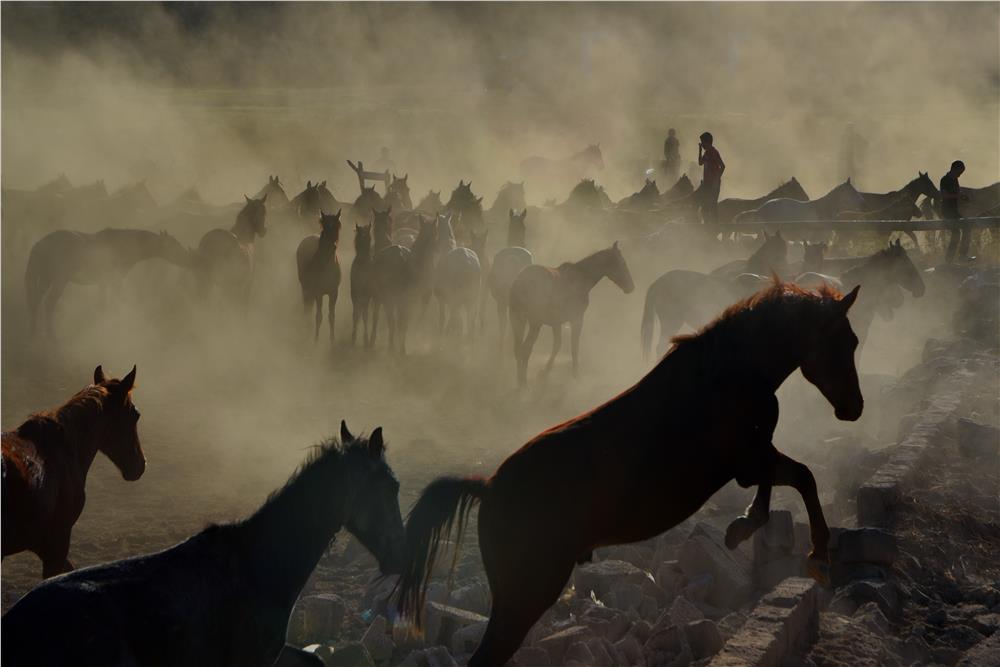
Horses have different personalities, there is a whole horse language that includes their ears, leg postures and head movements. Spend as much time as possible with both the horse and its owner. Take the whole day if possible. Move slowly enough to notice opportunities such as interesting backgrounds or light.
Ask questions about the horse's favorite things to do. A horse can be really happy after being taken outside during the day and you can capture some interesting images later. Photographing horses is great, sometimes challenging, and involves a wide variety of photography styles and skills. Respect the horses and have fun. They are so beautiful that it takes your breath away when you suddenly encounter them running free across a field.
Horse photography has been an exciting occupation and art since the first day the shutter of the camera was pressed. People's interest in photography has become more widespread with the advent and development of social media.
Photography, which started to industrialize with the income of quality photos on social media, started to create new areas of expertise, especially horse photography.
Photography brought the beauties of the horse together with the technical features of the photograph.
Photography, which brings people together around a purpose, combines the beauties of the horse with the technical features of its photography. Horse photography workshops for horse and photography enthusiasts to find courage, improve themselves, reinforce their knowledge, and advance creating waves of increasing interest for
Those who had an emotional bond with horses in their childhood and youth begin to do deeper research on horse photography workshops in order to pass on these big friends who color their lives and add color to their world to future generations with a camera.
Equine Photography Requirements
Putting art in the frame of the small viewfinder has never been within the reach of anyone who can press the shutter. Especially, it is much more difficult to place big friends who are constantly moving and have feelings in that frame.
Equine photography, which blends basic photography information and the photography and horse love you desire, needs a quality camera and equipment that can carry you to your goals. Basic information is necessary to add light, movement, speed, geography, repetitions, observing life, environment, models, scenery and events.
Equine photography regains lost values and beauties such as time, effort and money. It shows discovery, the paths to discovery. It shows you how to create story and composition about horse, aesthetic, artistic, lithe horses photo frame.
The horse that is beautiful everywhere is peaceful and happy in the mountains, the countryside, and the vast nature. Using his emotions, wishes, love, hate and body language very well teaches the horse to read, understand and plan the next step.
Teaches you to enjoy the photo you take by teaching the horse 's foal, motherhood, paternity, mare, social relations with friends, communication. Horse, with its colour, mane, running and eyes, makes it possible to place it in different frames, to reflect the natural light like a flash to capture the most beautiful and aesthetic form of the horse, and to play the shadows with each other.
By reflecting the light on the horse from all directions in order to reveal the mystery, innocence and strikingness of the horse; makes them comprehend the subtleties of light culture. You reinforce various shooting methods according to different environment, time, speed and light.
The head of the Arabian horse, the speed of the English horse, the muscles of the Kazakh horse give priority to the colors and brightness of the Turkmen horse. The horse, seeing, understanding, grasping, proximity; teaches how to feel and behave like a team member .
How happy you are to love horses, to see them special and valuable, to photograph these beautiful creatures.
Photographing a horse is an instant, difficult task. Photographing a horse usually takes a snap. You have to watch, wait, listen, of course be patient. You test how these difficulties turn into easy and enjoyable.
You need to know the horse, its breed, riding styles
The horse has red brown, brown body, black mane and tail, dark yellow body, black mane and tail, white, white and black mixed with dark hairs. Properly preparing the horse for a photo shoot is a very important task. You need to know the horse, its race, riding styles. Washing, grooming the horse for shooting, and if you are going to shoot the horse and its owner together, determining the color-matched clothes of the owner are very important details.
Instead of moving the horse to a studio, move the studio to the horse's stable
Instead of moving the horse to a studio, moving the studio to the horse's stable yields more efficient results. Do not overlook the lighting while providing ample space for the shot. Let your horse and model feel comfortable. Do not put tension on the horses. To make the horse look more agile and graceful, relax the horse, do not get angry, do not distract, know everything that frightens the horse and the model, and remove it.
Wide meadows are not necessarily fertile photo spots
In close-ups, wide meadows aren't always a productive photo spot. Choose great backgrounds free of distractions, be sure to leave space between the background and the model. It is always better to stop the horse at one point, calm it down, guide its owner, conserve its energy and return it to the starting position. In this way, it does not lose its energy very quickly.
Be patient with the horse, remember it is not a professional model
Getting down on your knees, using long focus, you achieve an impressive result. Always be flexible in your position and position the horse according to you and your model, not your own. Be patient with the horse, work knowing that it is not a professional model , it is the first time he is doing this job , and the owner is in the same situation.
With a good photo shoot, you don't need retouching as long as you provide a nice level of exposure, contrast, saturation and colors.
Always notice the beauty of every horse you know. Let capturing the personalities and beauty of horses be your ultimate goal. Work with the horse's characteristics in mind. Take multiple exposures from a variety of angles, all using natural light, with a focus on showing the horse's best features. In some cases, this way no extra equipment or background is needed. Make every image and every shot with your own art style.
Horses of all breeds, ages and breeds are always very impressive, remember this and try to bring it out. You should feel inspired enough to get closer to knowing what you want and start working towards your goal.
You must show respect and understanding to the horse and value the time spent as you work in different ways depending on each horse's personality to bring out their true character. There are strong reasons to talk about the emotions of horses. Horses are a great teacher of understanding our own emotions and how to behave.
Capturing this beauty with photography is pretty easy considering that horses are graceful and majestic creatures to photograph. Being a skilled equine photographer requires practice, the right equipment, and a well-trained eye.
Equine photography is perceived only as pictures of horses. Because of the many different types of images, most photographers try to specialize in one or two areas. Top professionals follow fine art, horse photography and travel the world to photograph the most exotic and beautiful horses in the world.
Depending on your skills, equipment and style, you can choose a career. Maintaining the photography business as a part-time job is also very beneficial. Horse show photography is challenging, but it can also be a lot of fun.
Send a survey to your client to find out the horse's personality and owner's expectations. Based on this result, it can be easy for you to plan which shots you will take, to plan, and to predict the problems that may arise. Make legal contracts. Make a list of shots and don't forget the images you need to shoot so you don't get stuck.
Fully charge all your batteries, even your spares. Format your memory cards, constantly check your equipment. Bring treats and toys to get the horse's attention. Have an assistant if possible. Check your settings before you start taking pictures. Recheck your settings regularly if the light changes when shooting outdoors.
Any photographer can take a picture of a horse, but an equestrian photographer will help you get the high-quality portraits you love. It takes training and experience to properly pose and photograph a horse to make them proud.
Photographing horses requires a different approach. As the most beautiful animals in the world, horses have majestic movements and graceful posture. Get comfortable with the horses. The horse senses your emotions because its intuition is very strong.
Your communication with horses is always based on the action-reaction principle. Your reaction to them affects their reaction to you. If you are acting restless, fearful, or anxious, they will also become nervous. It is a biological response based on their nature. If you treat a horse threateningly, it will get scared.
The horse understands that you are sure of what you are doing and that you are not in control, it can misbehave as well as give you an advantage. Spend time with the horses, talk to horse experts and riders and gather a wealth of information before photographing them.
Safety that goes both ways is very important in animal photography. Listen to the horse sitters who know their horses best. Follow their guidelines, respect their limitations, and don't cross them.
Horses may bite, kick or chew when scared, upset or angry. Notice also the horse's reaction to your behavior. The priority should always be the welfare and well-being of the horse.
Let the horse get to know you and your gear a little better. Give the horse some treats, rub it happily, and let him check your camera. Notice how it responds to the shutter sound. If he's getting restless, switch to the telephoto lens and shoot from afar.
Choose equipment that complements the proportions of the horses. Focus heavily on the correct positioning and aesthetics of the horse. A normal lens gives an image that is identical to what the human eye sees. Standard lenses have an angle of view of about 50 to 55 degrees diagonally. The most efficient standard focal length is 50mm.
Set your camera to burst mode and continuous focus. This setting works best for photographing horses. Horses blink, turn their heads left and right, and move out of nowhere. While you press the shutter button, you will take several photos in a row. Try to take pictures from the horse's eye level. This adjustment helps the body look proportional. Viewers also show sympathy for images shot from the same perspective as the subject.
Avoid using the flash if you're just starting out. Use natural light. Remember that you can take the best photos in the morning and around sunrise. Get permission from the horse owner when you need to use a flash. Some horses may be accustomed to competitions and photo shoots, but most may be frightened by the light.
While body and portrait photos are very successful, pay attention to detail. The best thing about photography is capturing what no one else notices. Keep your shutter speed above 1/2000 to freeze the horse's flowing mane.
Pay attention to your backgrounds. If your background color is very similar to a horse, the image will remain flat. What attracts attention is the contrast between the foreground, the subject and the background. Pay close attention to lighting and compositional elements. It may be a good idea to have an assistant distract the horse so it looks in the right direction.
Horses cannot be comfortable in the new environment they are brought into. Look for new and different ways to work with given parameters. Try a wide aperture to blur the background, use post-processing techniques to separate the horse from the other elements.
Different horse breeds have different characteristics and beauty. Ears make the pet look alert, happy. A horse's forward ears complete the composition of their heads and show that the horse is confident.
Horses are known for their long necks and muscular physique. The key to good portrait shots of horses is tension. Bend the horse's neck a little to make the horse look more agile and graceful. You can ask the horse sitter to bend the horse's neck forward.
Horses usually move in the direction of the paddock entrance as it has a home. If you want to shoot where the horse is moving or galloping alone, it’s easier to get it to move from the other end of the paddock towards the entrance.
Capture the closeness and shared moments of the rider and horse. This can happen after a driving session or during cleaning. Take some portrait photos to highlight their connection. Make sure you are invisible so as not to disturb their interaction.
Use simple tools such as a saddle or bridle to suit the horse or its equipment. Horse photos that tell a lot are the ones that capture the spirit of your subject. This means not being afraid of candid and personality horse photos.
If you are in a penumbra, move your equestrian and rider in either full light or full shade. Your camera's automatic settings will work best in consistent lighting. In low light, set your camera's ISO to 400 to help stop the motion and get a good exposure. If you shoot in the auto setting in low light conditions, your photos will appear motion blur.
If you need to shoot in the shade, your flash will help equalize the light and stand out from the dappled shadows. If you use the auto setting of the camera, it may not work due to ambient light.
Look for interesting angles and don't miss opportunities. Add more sky than usual to show the depth of the scene, the scenery and the seclusion of the area.
Equine photographer has unique opportunities to show dramatic landscapes. Instead of centering all your subjects, add extra sky to show the scope and seclusion of the scene. Capture the connection with the horse of the client who asked you to take a portrait with his horse.
As the horse passes by, pan your camera to follow its movements. Keeping the camera focused on your subjects will help keep the camera focused and help you press the shutter button at just the right moment.
Even if you think you have a great picture, always take an extra photo of the same scene. When photographing horses, small movements such as tail rustles and ear twitches can make or break the photo you want.
Upload your photos now to save space on your memory card. Create the appropriate files and continue editing the images. Never edit photos in that file to ensure you always have a high quality image.
For a good print, each image needs to be 300 DPI at the size it will appear in the print. Your photo editing software will likely do the math for you. If you type 300 DPI, your software will tell you which pixel and print height are related.
Aim for 72 DPI for the web. At this resolution, photos are easy to email and access over the internet. Photos will look great on your computer and website.
30,000 years ago, the first horse training manual was spread by the Hittites in 1360 BC, on the stage of history when the horse, which was shaped by man in cave art, appeared.
The name of the unsung hero who changes the world when his speed and power is used is the horse. After being domesticated, the horse transformed the world, enabling humans to dominate the world with its speed, strength, loyalty and friendship. He is a socio-cultural educator who brings the distance closer, shortens the paths, makes it accessible, spreads and transforms cultures to the world.
The horse's body is extremely suitable for people to sit and move freely. This fascinating being has many uses in human life such as war, transportation, agriculture, trade, sports, industry and entertainment. In fact, manure is used as a fuel for roofing, heating and cooking.
The horse, which has very useful abilities for the owner, feels fast, strong, warns its owner, and has its injured owner treated, became an important actor in human life, culture and socio-cultural transformation processes after it was domesticated. The horse, which facilitates many things in human life, carries man and his burden, cultivates the land, manages his herd, attacks together in war, takes the defensive, and protects against dangers, has been the most reliable friend for man.
Kazakh immigrants, Northern Siberian Yakuts, Turkmens, Arab Bedouins, who regard the horse as the source of security, abundance and wealth, place in the most precious corner of his life even today. In the 19th century, he opened the door to great profit by selling horses in the Wild Market in Kayseri, next to Cappadocia.
A horse that can run under -40 degrees and desert heat, and spends eight months of winter sleeping standing up; They are talented, intelligent, adaptable and learn quickly. The Horse, which can live in anywhere and leave its mark on sports, health, culture, industry, agriculture and security, has brought humanity to civilization.
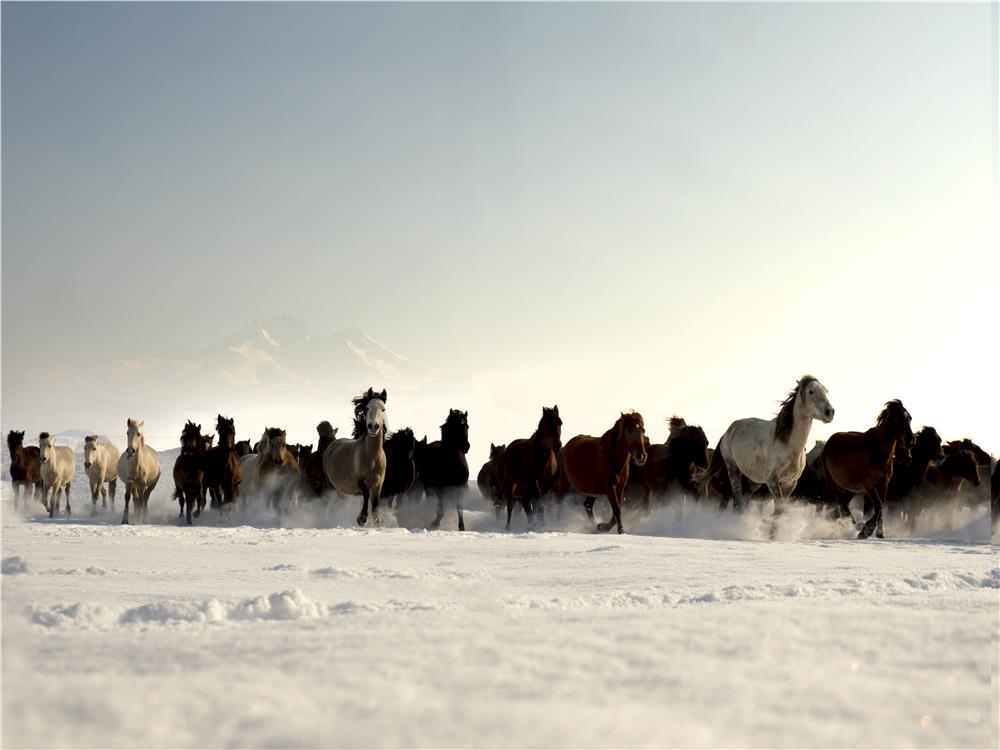
The first step symbol of technology, which is a source of inspiration and power for humanity, makes you more than happy. The horse, which keeps its eyes on people if it is not harmed, is the hero of historical transformations such as the beginning of the 'Age of Horse' and the Industrial Revolution.
The horse, which prunes what it eats, gives seeds, provides fuel, and gives mortar to the nests, is the focus of literature, art, transportation, agriculture and sports in developed countries because it is the most efficient environmentalist . The settlement areas show the value given to the loyal friend with the horse statue.
Being a matter of physical and psychological therapy to people, the horse contributes to health with their feelings and harmonious structure, integrates with the owner and his heart, breath, gait and balance, and make significant contributions to self-confidence, muscle development, movement and walking support, muscle strength, hormone and brain functions.
The horse, which provides the ability to observe, responsibility, compassion, panic control, anger control, motivation, concentration, self-confidence, socialization, and a fit appearance to its owner, the person on its back, has recently been ridden more and more by women.
Horses are one of the most important things in your life. From horses playing freely and playing to grazing in a beautiful field or posing majestically, we love capturing horses in all their beautiful ways.
Protect your horse's health, get vaccinated and treated
Administer booster vaccines and worm extermination treatments to help maintain your horse's health. As autumn approaches , protect your horse from emerging risks such as equine influenza virus, equine herpes virus (EHV) and parasites.
Horses are vaccinated against equine flu and equine herpes virus twice a year to help boost immunity. Horses should always be boosted with the Fluvac Innovator in the fall. Spring vaccinations help provide disease protection, activate the immune response.
First domesticated in Europe and Asia, the role of the horse has changed dramatically throughout history. These wonderful animals displayed an incredible range of talent and athleticism. While some cultures still use horses for transportation or agriculture, there are those who see the horse as a matter of sport and a pleasure.
The economic value of the horse trade is around 50 billion dollars in the USA.
The economic value of the horse trade, which is a billion dollar industry, is estimated to be around 50 billion dollars in the USA. Thanks to improved breeding and nutrition, the equine industry has significantly improved performance.
3D printing is being used to create casts, splints or possibly prosthetics for animals with injured or broken legs. 3D horseshoe printing technology was developed to produce horseshoes using imaging software that closely analyzes the hooves to ensure an ergonomic fit. The technology can be used for all sorts of individual sizes, which can help horses to relieve chronic symptoms and recover faster.
With robot technology, many horses' lives could be saved
With robot technology, many horses' lives can be saved. Robots can have applications that reduce risk in operations which could be life-threatening for horses.
There are wild horse societies in many parts of the world. Especially in and around Cappadocia, these areas offer great opportunities to photograph wild horses. Mares, foals, fighters make great images.
Jade horses are very difficult. Jade horses, whose living spaces are narrowed and trapped in narrow spaces due to people, live in difficult natural conditions. Urbanization and mechanized agriculture are causing the abandonment of the horse.
According to Nuri Çorbacıoğlu, jade are rebellious and free-spirited horses struggling to survive on their own. He introduces you to its 300 year old horses in the fields close to Kayseri Hürmetçi Village.
It's important to understand the physiological, psychological, aesthetic, and behavioral traits of horses. When capturing pictures, it's also important to understand composition and light.
 |
Written by Nuri ÇORBACIOĞLU E-mail: [email protected] Instagram: @nuricorbacioglu WhatsApp: +90 505 469 33 59 Cumhuriyet Mah. Atatürk Blv. No: 70/4 Ürgüp Nevşehir – Turkey
Equine photographer Nuri Corbacioglu is a specialist in this field. |
